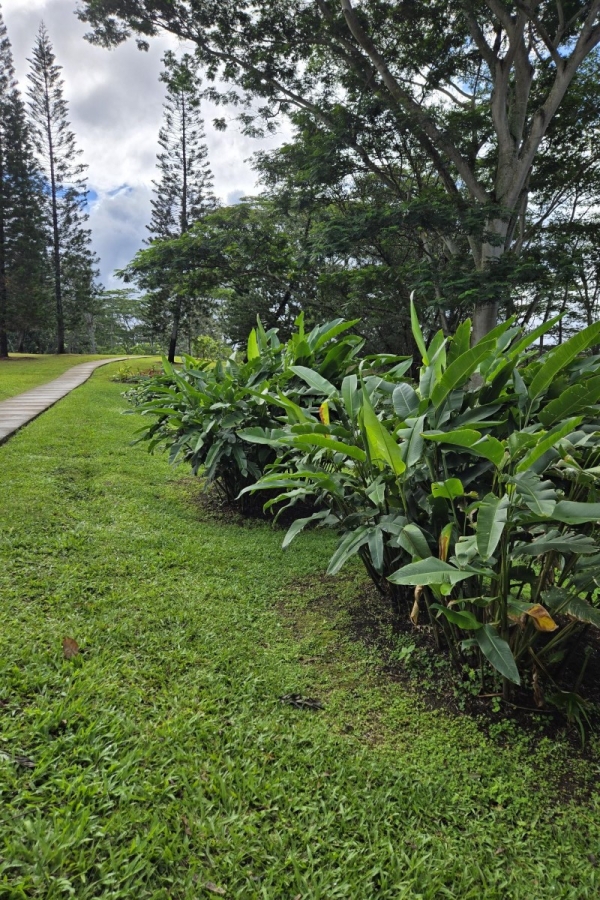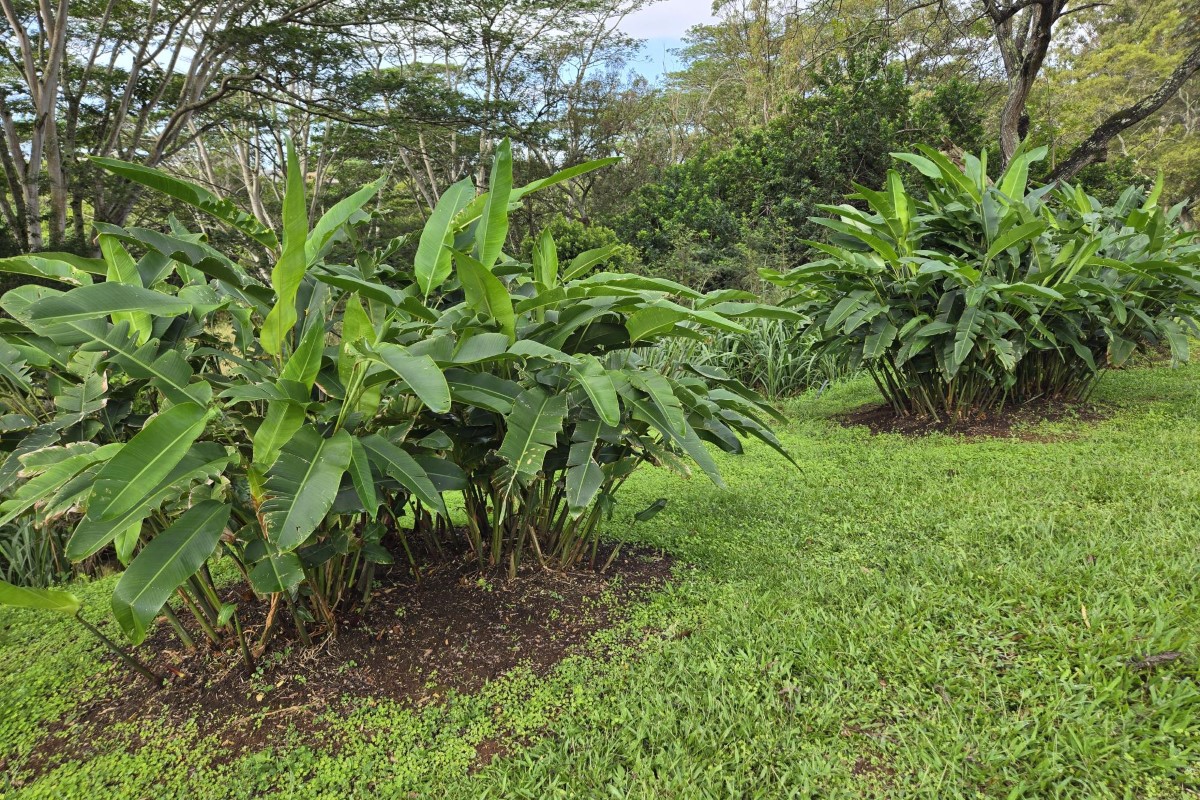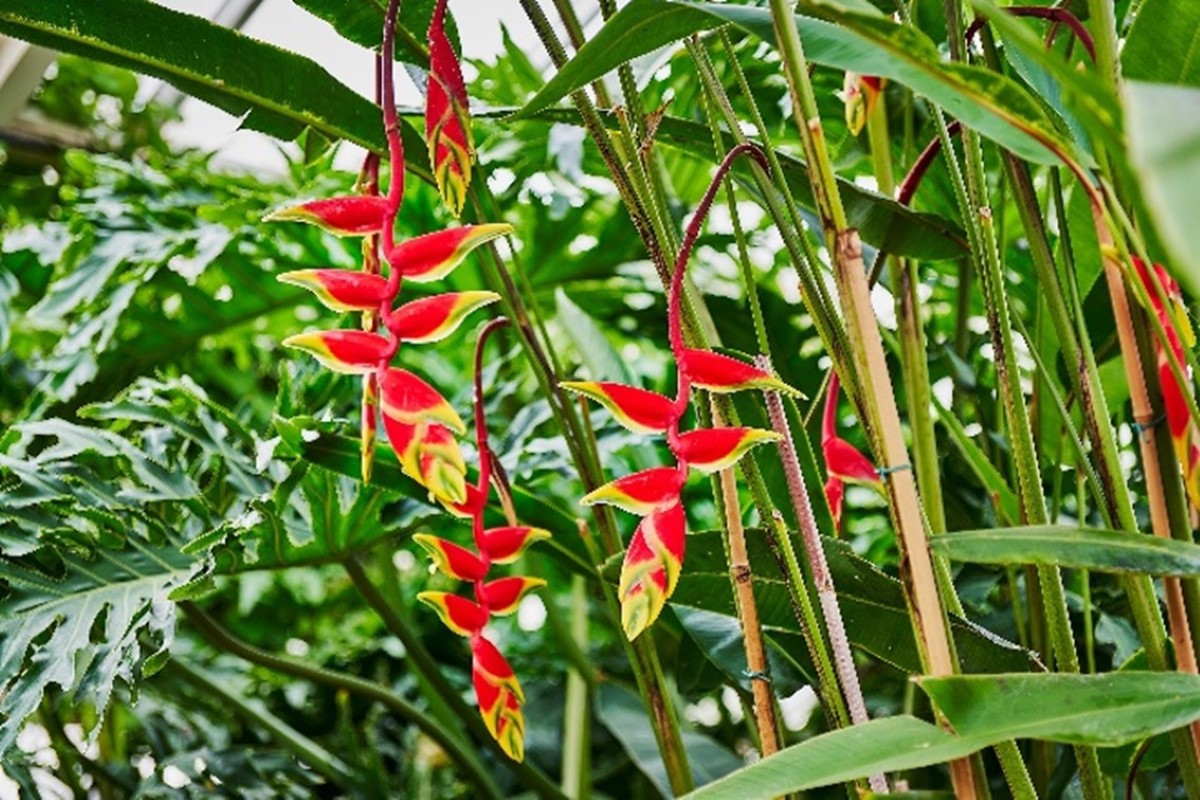Nature Walk – Zone 7
Hawaii’s native flora is as unique as it is diverse, with approximately 1,400 vascular plant taxa native to the islands, and nearly 90% of these are found nowhere else in the world. The rich tapestry of plants includes the native Akia plant, the Pohinahina, used medicinally by native Hawaiians, and the Kupukupu fern used in traditional Hula, are just a few examples of the islands’ botanical treasures. Conservation efforts are crucial to protect these species from threats such as habitat loss, invasive species, and climate change. Initiatives include surveying historic ranges, augmenting wild populations, and establishing new ones in safe harbors. The MTA Nature Walk was developed to highlight these plant species and other important fauna of Hawaiian culture and landscapes.
Zone 7 Plants
Heliconia
Hawaiian Name: Heliconia psittacorum
Scientific Name: Heliconia psittacorum
Common Name: Parrot’s Beak
Heliconia psittacorum, a medium-sized plant known for its unique flower shape, thrives in the lush landscapes of Hawaii. Its narrow leaves and vibrant red or orange inflorescence make it a striking addition to the tropical environment.
This species is well-suited to the Hawaiian climate, capable of thriving in full sun and tolerating some wind. However, it tends to spread and may become invasive if not properly managed. Benefiting from Hawaii’s rich volcanic soil and warm temperatures, Heliconia psittacorum grows rapidly.
A popular choice for tropical gardens and landscaping, it adds a splash of color and an exotic flair to the surroundings. For cultivation, well-drained soil is recommended, and care should be taken to consider its spreading tendencies when selecting a planting location.
Heliconia Rostrata
Scientific Name: Heliconia rostrata
Common Name: Lobster-Claw
Heliconia rostrata, a perennial herbaceous plant, is native to South America. It has been introduced to Hawaii, where it thrives in the tropical climate. In Hawaii, this vibrant species blooms throughout the year, adding striking red and yellow hues to the landscape.
The plant is especially notable for its unique inflorescence, resembling a lobster’s claw, which inspired its common name. Heliconia rostrata prefers moist, fertile soil and can adapt to various light conditions, ranging from full sun to partial shade. Its striking appearance and ability to attract pollinators like hummingbirds make it a popular choice for tropical gardens.
While robust and well-suited to Hawaii’s environment, Heliconia rostrata benefits from protection against strong winds and requires adequate watering, particularly during dry periods.


